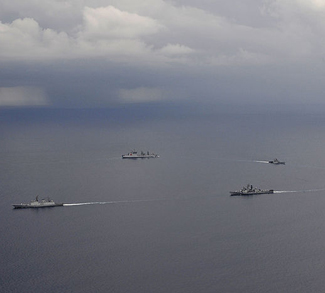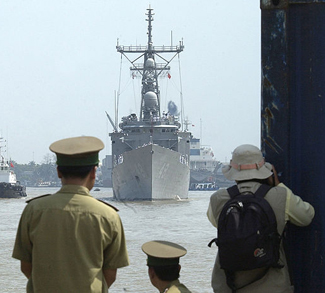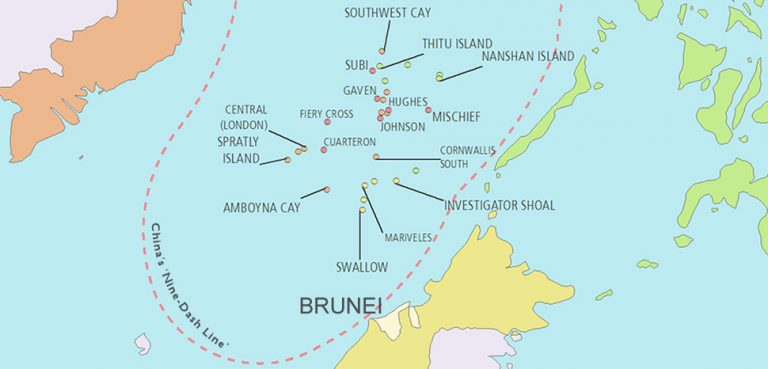Although the Xi Jinping administration is now secure enough in its transition to power to put nationalist jingoism back in the box from whence it came, recent events suggest that China will continue to tow a hard line in regards to its military and economic rights in the South China Sea.
Earlier this week, Chinese media sources reported that police authorities in Hainan province will be authorized to search and seize foreign vessels operating in Chinese waters starting next year. The announcement prompted an immediate response from the Philippine government, which condemned the move and requested a clarification as to what exactly can be considered ‘Chinese territorial waters.’ ASEAN also chimed in over the announcement, with Secretary General Surin Pitsuwan calling it a move that “raises the level of concern and great anxiety [in the dispute].”
Judging by Chinese official statements on the subject, it seems likely that this expansion of search and seizure powers applies to China’s entire territorial claim, which is essentially most of the South China Sea, extending as far south as Brunei. It can be seen as an initial attempt to leverage China’s growing naval power to buttress an ambitious territorial claim that has, up until now, remained largely rhetorical.
If Beijing goes through with the plan, it will ramp up the volatility in an already precarious region. Whenever hard military assets are being deployed and coming into close contact with one another, the risk of a crisis breaking out is substantially heightened. It wouldn’t take much for a relatively small and seemingly insignificant event, much like the standoff between China and the Philippines earlier this year, to spin out of control and set off a regional conflict.
And make no mistake: there will be no shortage of military ships operating in the South China Sea. On the very same day that China announced its intention for expanded search and seizures, the government of Vietnam announced that it was going to begin military patrols of its own territorial claim. This announcement comes on the heels of an incident earlier this week in which a group of Chinese boats cut the cables of a PetroVietnam survey vessel operating off the Gulf of Tonkin.
But by far one of the most interesting recent developments in the South China Sea dispute is the entrance of India into the fray. Earlier this week, Indian Admiral D.K Joshi publically asserted that India will not back off from protecting its maritime and economic interests in the South China Sea.
Although India doesn’t have any direct territorial claim in the area, the waters are strategically important to New Delhi for three reasons. First, like for any trade-dependent country, the South China Sea represents an important global shipping route and freedom of navigation must be maintained. Second, India’s state-run Oil and Natural Gas Corporation (ONGC) owns a stake in waters claimed by Vietnam. And third, and perhaps most importantly, the South China Sea represents an opportunity for an Indian riposte against China’s ‘string of pearls’ naval encirclement of the Indian subcontinent.
As far as the Indian government is concerned, an energy stake in the South China Sea represents more than just an economic windfall. It affords the Indian Navy a position, however small, in the growing bloc of countries that don’t want to see the South China Sea become an exclusive military domain of China. The Indian government even has a handy rationale for jumping into the fracas: it’s merely protecting Indian economic interests and working to ensure free passage on the international waterways that global trade is built on. This is the very same rationale that China has used to project its economic and military influence into India’s own backyard, in Sri Lanka and Pakistan.
In the wider sense, this is a case of India trying to beat China at its own game. Yet it remains to be seen what kind of impact it will have on the long-running dispute in the South China Sea.




